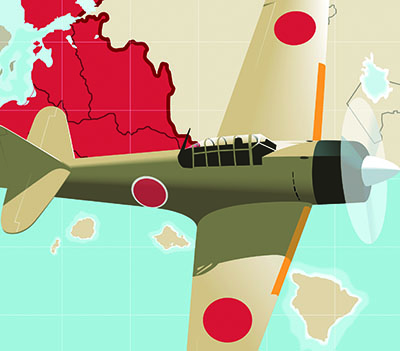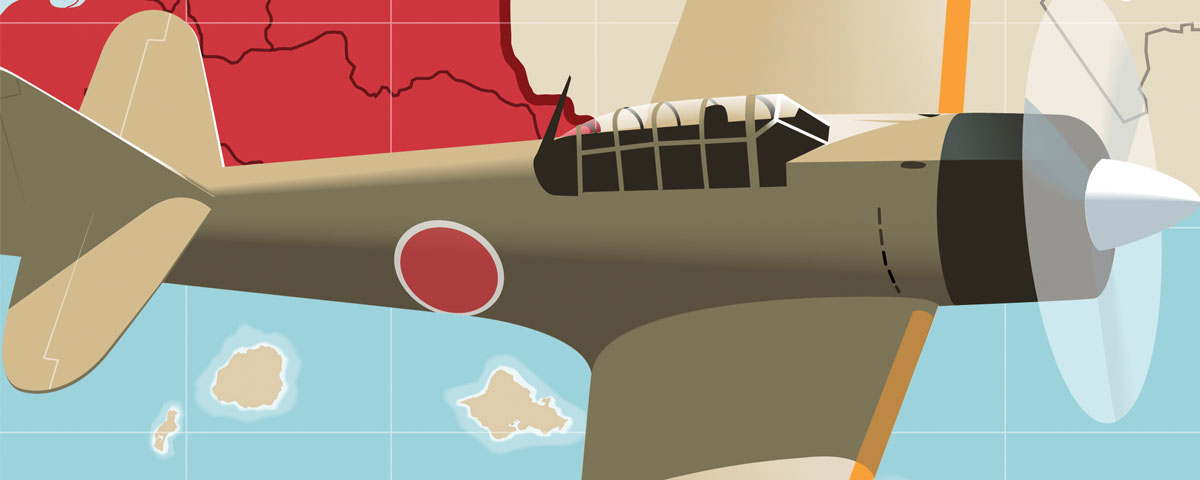
Historian Rob Citino explains how Hitler hoped his military strategy in Russia would impress and inspire the Japanese to help them fight against the Soviets
EMINENT WORLD WAR II HISTORIAN Gerhard Weinberg often begins his lectures with
a seemingly unnecessary prompt: “the earth is round.” He uses this bit of commonplace wisdom to remind the audience that the events on any one front of the war inevitably had an impact on all the others.
If you ever need reminding of the “roundness” of the globe, just look to the first week of December 1941. Two great events took place: the massive Soviet counterattack on December 5 that stopped cold the German advance just outside Moscow, and the Japanese strike at Pearl Harbor on the 7th that wrenched the United States into the war.
Just a coincidence, you say? After all, it’s a long way from Moscow to Pearl—some 7,000 miles—and that’s about as far away as you can get on planet Earth. How could one of these events possibly have fed into the other?
Simple. The earth is round. Many factors led to the German defeat in front of the Soviet capital, but above all, it was the result of a serious German logistical overstretch, with losses outstepping replacements and an utter lack of reinforcements. The German drive on Moscow petered out in late October, with the arrival of the autumn rains. It restarted briefly when the mud froze, but then got stuck altogether with the hard freeze and snow of mid-November. The Soviets even liked to brag about two of their most heroic commanders: General Mud and General Winter. By any reasonable standard, the time had come for the Wehrmacht to take stock, consolidate a good defensive position, and use it as a jumping-off point for a 1942 offensive. But that didn’t happen—quite the opposite, in fact. The Germans kept pressing forward, suffering soaring casualties for decreased gain, and we now know one of the reasons: Hitler kept pushing onward to impel the Japanese to enter the war.
The Führer knew the Japanese were considering a strike on the United States. Back in March, Hitler had promised Japanese Foreign Minister Yosuke Matsuoka that Germany would support the Rising Sun in any war it launched on the United States. But the Japanese had refused to engage, deciding instead to spend the year in seemingly endless negotiations with Washington. They stalled again in July, when the Wehrmacht was carving up the Red Army like a roast, but Hitler feared the Japanese were less likely to make a move if the Germans suddenly looked like losers at the gates of Moscow. He desperately wanted Japan in the war. He was impressed with Japan’s military tradition, its never-say-die soldiers, and, of course, its big blue-water navy—the wartime Reich’s most serious strategic deficiency. A Japanese attack would keep the United States distracted and reduce the amount of American materiel flowing to the Allies: all good things for Berlin.
And so the Wehrmacht kept going, long past the point of diminishing returns, inching forward until German formations were ridiculously close to Moscow, just 10 to 12 miles. In getting there, however, the Germans had fought themselves down to the last man and tank: divisions were the size of battalions and companies the size of squads. Frostbite was rampant and winter clothing scarce, a result of a deliberate decision to prioritize ammunition and fuel for the final push. This ghost army was easy prey for the vast Soviet counter-offensive that opened on December 5.
The Japanese did, of course, finally take that long-awaited plunge, two days later. They did so on their own schedule, for motives that had little to do with Hitler’s operational decisions. But in doing so, they were one of the reasons the Germans kept grinding forward, and the lateness of their strike on Pearl Harbor was a key driver in the German disaster before Moscow.
Like the man says—“the earth is round.” ✯





